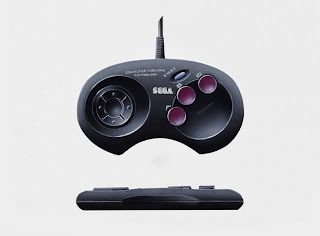Firstly lets talk about Elite and its History....
Q. Tell us about your role at Elite - Steve from the beginning and to now?
Well, I’m a de facto co-founder of the company, having been a Director since it’s formation on 14th August, 1984. Consequently, I’ve been involved – in some way - with every glorious (and every inglorious) moment of Elite’s 29 year history.
Steve Wilcox.
Although I’m a co-founder, that’s really less than half of the story. The real source of Elite’s foundation was my much younger and somewhat smarter brother – Richard. In 1982/3, at the age of 14/15 he wrote – first for the Atari 400 and subsequently for the ZX Spectrum – a TV-series inspired game, featuring a helicopter. It was called ‘Blue Thunder’ and was marketed using the label ‘Richard Wilcox Software’. Our father, Brian, backed Richard’s work with full-colour, full, page advertisments in Computer & Video Games magazine, amongst others. At that time, I’d just left my one and only post-University employment to set up and independent retail outlet specialising in the sale of ZX Spectrum software and hardware. It traded as “Bowies: The ZX Spectrum Specialists”. Richard’s game needed selling into the retail channel, in those days that meant Boots, WH Smith et al. So, between serving customers in our “mom and pop” store, I doubled as Richard’s telesales team, eventually selling around 40,000 copies ohf his game. A little later, four young guys set up camp in the store room of our shop and began working on a ZX Spectrum game to follow Richard’s (and the first to be published using the label ‘Elite’). That game was called ‘Kokotoni Wilf’.
Steve Wilcox.
Those very early days, ‘83 to ’87, were a blizzard. 7 days a week. 12 hours a days. Phones. Planes. People. Products … and several million games sold. Looking back it’s hard to recall how we crammed so much in to such a short period. Half a dozen UK and European #1-selling games, Game of the Year, Software House of the Year, zero to one hundred staff.
Q. What was the process of developing and publishing games like in the 1980s?
Steve Wilcox.
A lot like developing and publishing apps today (… and absolutely nothing like publishing console games today). ‘Have an idea in the morning, be working on it in the afternoon, start marketing it the following day, have it in players’ hands the following month, (sometimes). A fantastically liberating, exciting and enjoyable way to earn a very good living, (if you were very lucky).
The Now...2013
Q. What has inspired you with this new Kickstarter?
Steve Wilcox.
The inspiration for the development of the Bluetooth ZX Spectrum device was a series of conversations with a national journalist in the Spring of 2011. At the time, the journalist was the Consumer Technology Editor for a British National Newspaper and called to talk to us about the range of original 1980s ZX Spectrum games which we’d relatively recently launched as apps for iOS devices. During the conversations he enquired whether we thought there was any possibility that the ZX Spectrum home computer might be recreated. At the time we spoke about how another 1980s home computer, the Commodore C64, had had a re-launch of sort in the form of a dedicated joystick (you can read about that device here) and that got us thinking. After talking about it in the office for a few minutes, our vision for how the ZX Spectrum could be recreated began to take shape. We called the journalist 30 minutes later and two days after, his account of our vision appeared in the article which he wrote. You can read that article, which created quite a stir at the time, here.
Q. How important was the keyboard to the ZX Spectrum - both in design and functionality?
Steve Wilcox.
I think Rick Dickinson, Industrial Designer at Sinclair Research in the 1980s and the man credited with the external look of the ZX Spectrum, best explained the importance of the keyboard to the design and functionality of the ZX Spectrum in the video which he recorded for our Kickstarter appeal. It lasts 5 or 6 minutes but is incredibly insightful. I’d recommend anyone interested in the device to watch the video.
Steve Wilcox.
Well, in the first instance and as we’ve recently confirmed, we’ll be updating the ZX Spectrum: Elite Collection / HD apps so that they’re compatible with the Bluetooth ZX Spectrum. For iOS device owners who’ve already invested in these app, that means that they’ll be able to play the 200 or so ZX Spectrum games which they may already own using the Bluetooth ZX Spectrum. Optionally, the Bluetooth ZX Spectrum can be used as a Bluetooth keyboard not only for iOS but also for Android and Windows phones and tablets (as well as for PCs and Macs). That throws up a whole host of additional possibilities.
Q Will there be any new games coming out in 2014 to working in unison with the hardware?
Steve Wilcox.That’s a great question. As you may know, we announced earlier this year that we’re working with Matthew Smith (‘Manic Miner’, ‘Jet Set Willy’ for the ZX Spectrum) on a new project. Wouldn’t it be fantastic if the launch of the Bluetooth ZX Spectrum coincided with such a project? Also, since the announcement of the Bluetooth ZX Spectrum a few days ago, we’ve been approached by developers with proposals that we work with them on the development and publication of new games for the device. It’s still very early days but there are clearly many opportunities for developers to launch new games to coincide with the launch of the Bluetooth ZX Spectrum.
Q. Have you been in contact with any 80s developers and creative pioneers from the 80s in this new project or as part of developing mobile games?
Steve Wilcox.
It’s remarkable but the answer to your question is yes. In addition to Matthew Smith, Keith Burkhill (‘Commando’, ‘Ghosts n Goblins’, ‘Space Harrier’ for the ZX Spectrum has worked with us on the ZX Spectrum: Elite Collection / HD apps for iOS devices. He’s still very local to us, in the suburbs of Birmingham. Nigel Alderton, (‘Chuckie Egg’ for the ZX Spectrum) is still in contact too. We’ve been publishing ‘Chuckie Egg’ for mobile phone for almost 10 years and will do so again for the Bluetooth ZX Spectrum.
Q How has the games industry changed since 1984 - the good and the bad?
For the good - scale an certainty. When we first became involved in the games industry in the first half of the 80s there was still much comparison with “the Skateboard business”. At that time “the Skateboard business” was seen to have risen and fallen (it hadn’t yet risen again) and in some circles there was a fear/ expectation that a games industry “built on kids who had no disposable income” was just a flash in the pan. Thankfully, that’s no longer so. I’m struggling to think of ways in which the games industry has changed for the bad. If I was forced to pick on one then I’d say that the somewhat predatory way in which some developers / publishers elicit (sometimes large chunks of) cash from the young and the vulnerable, though in-app purchases, is a step in the wrong direction. Elite has not nor will it ever be involved in such activities.
Q. What are your favourite Spectrum games with keyboard play?
Steve Wilcox.
‘Manic Miner’.
You can back the Elite Systems Kickstarter here: http://www.kickstarter.com/projects/952953995/bluetooth-zx-spectrum-recreating-the-sinclair-zx-s?ref=live

.png)





































